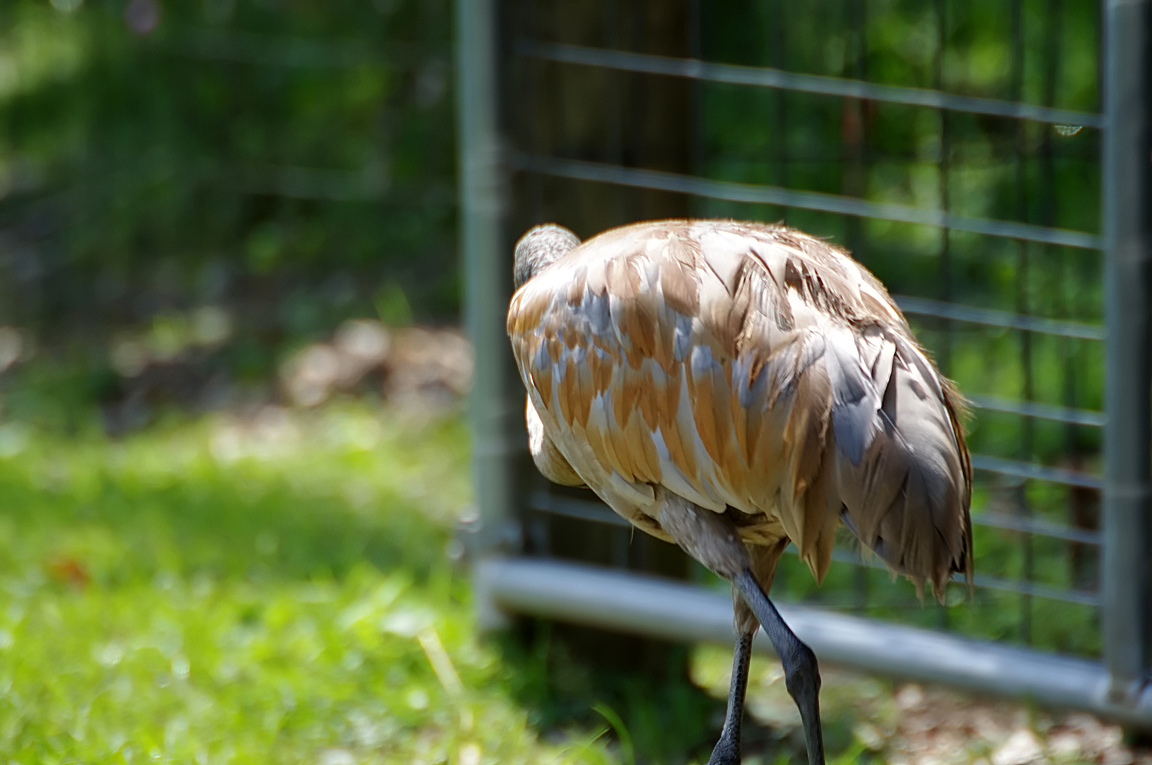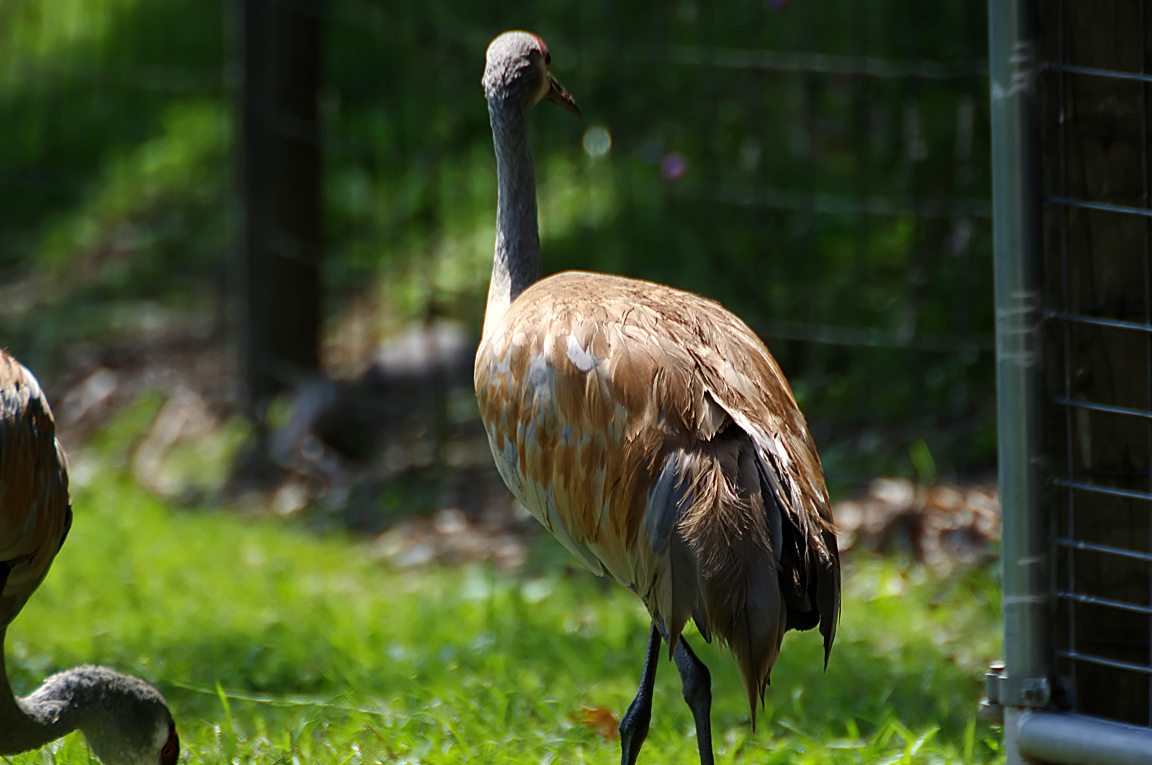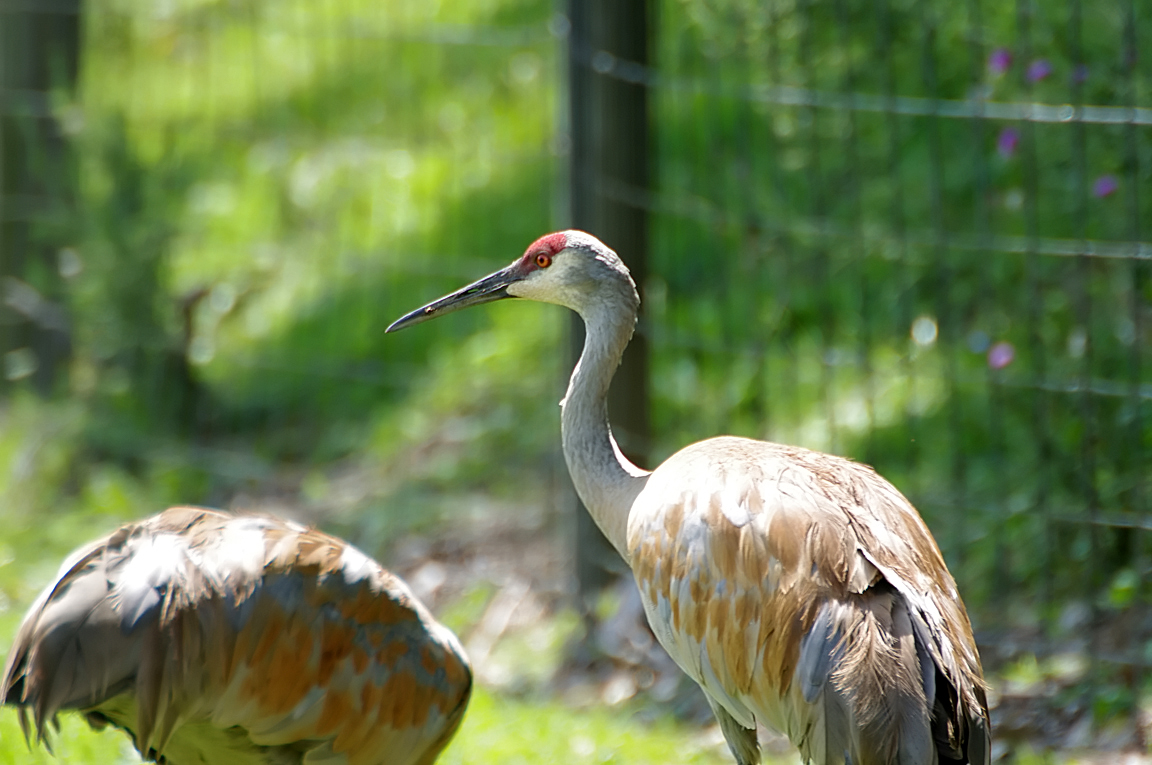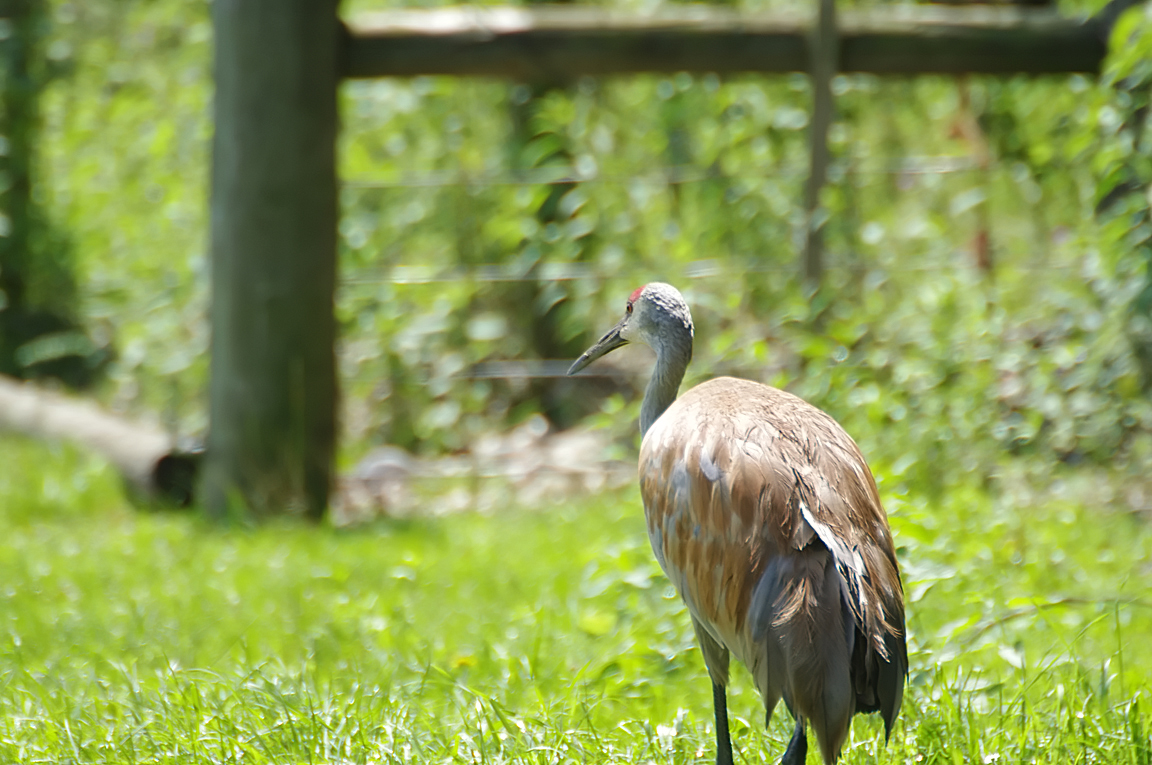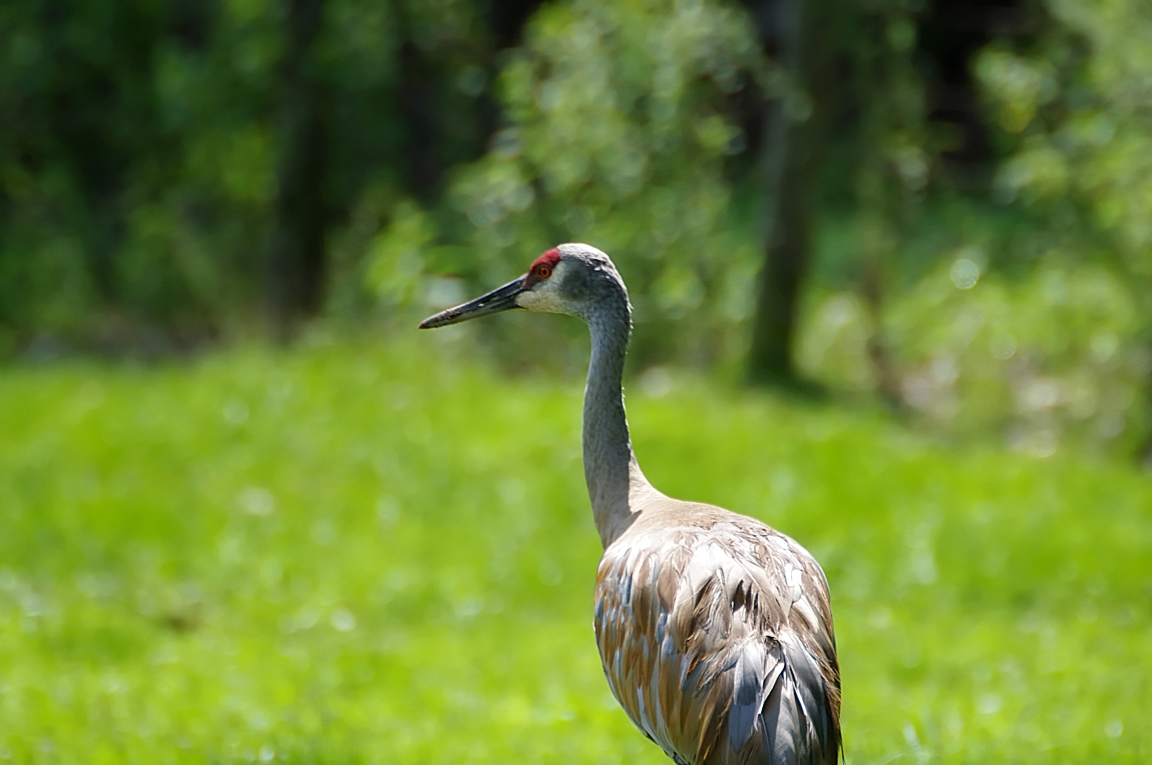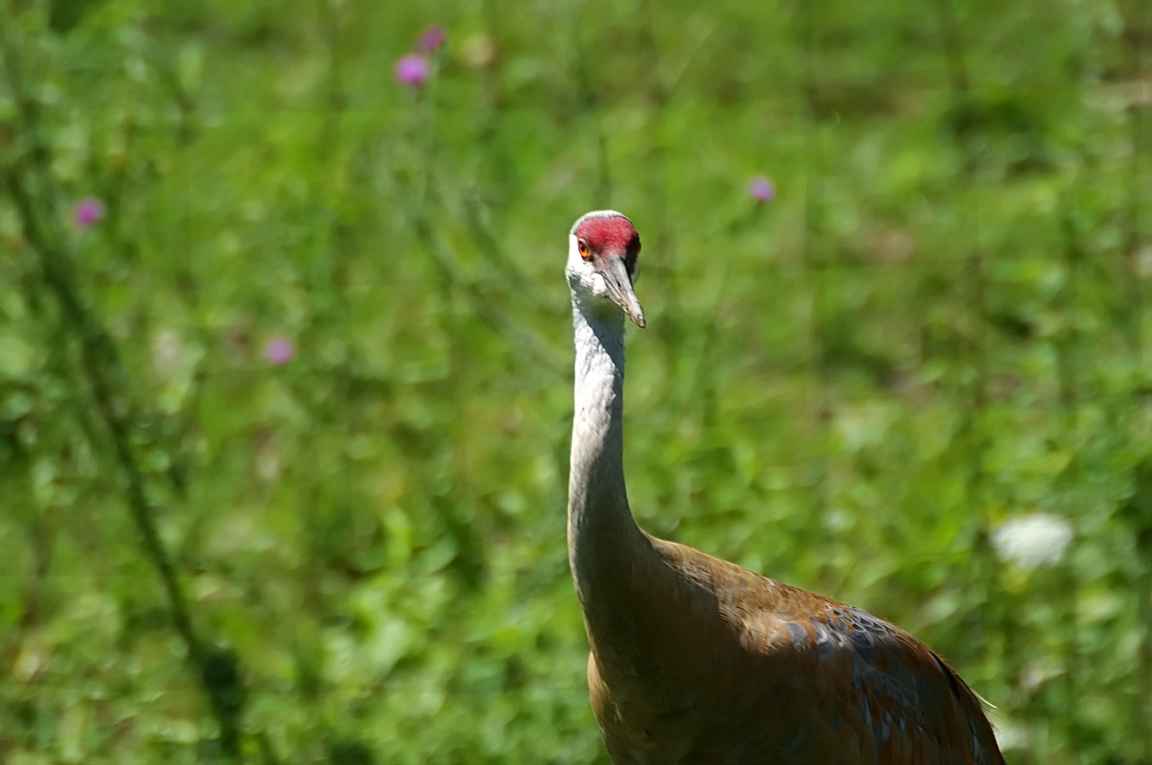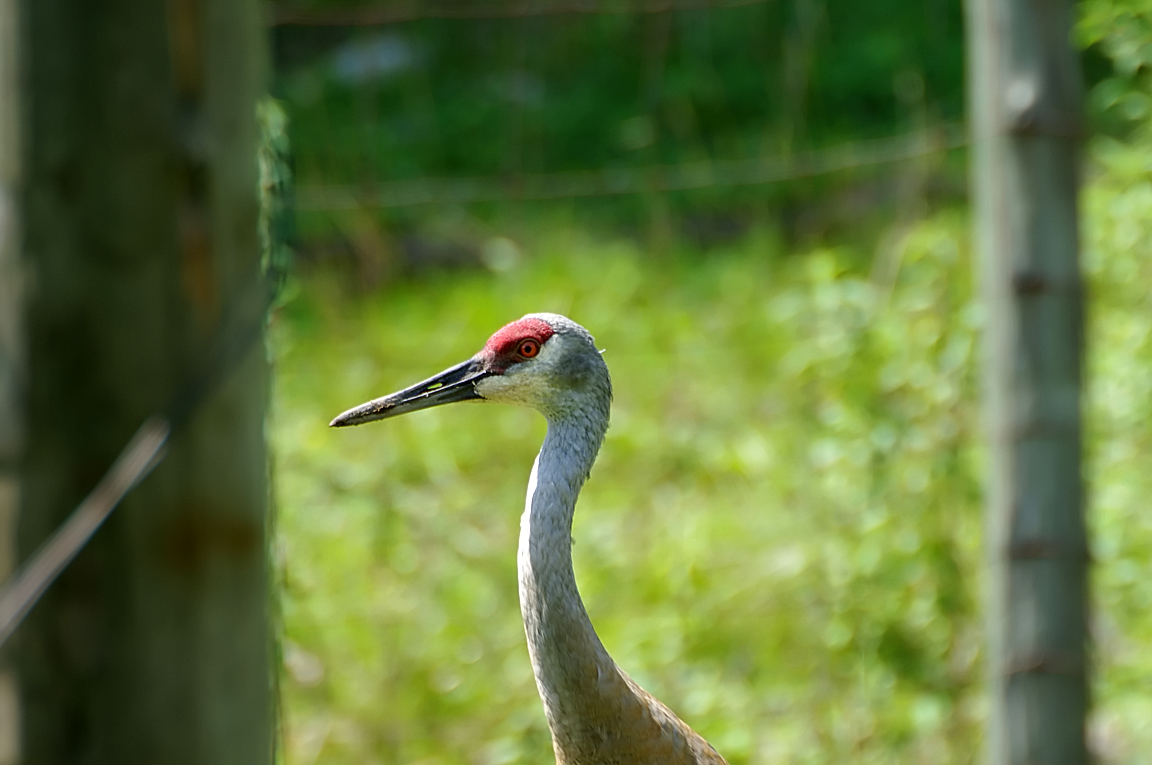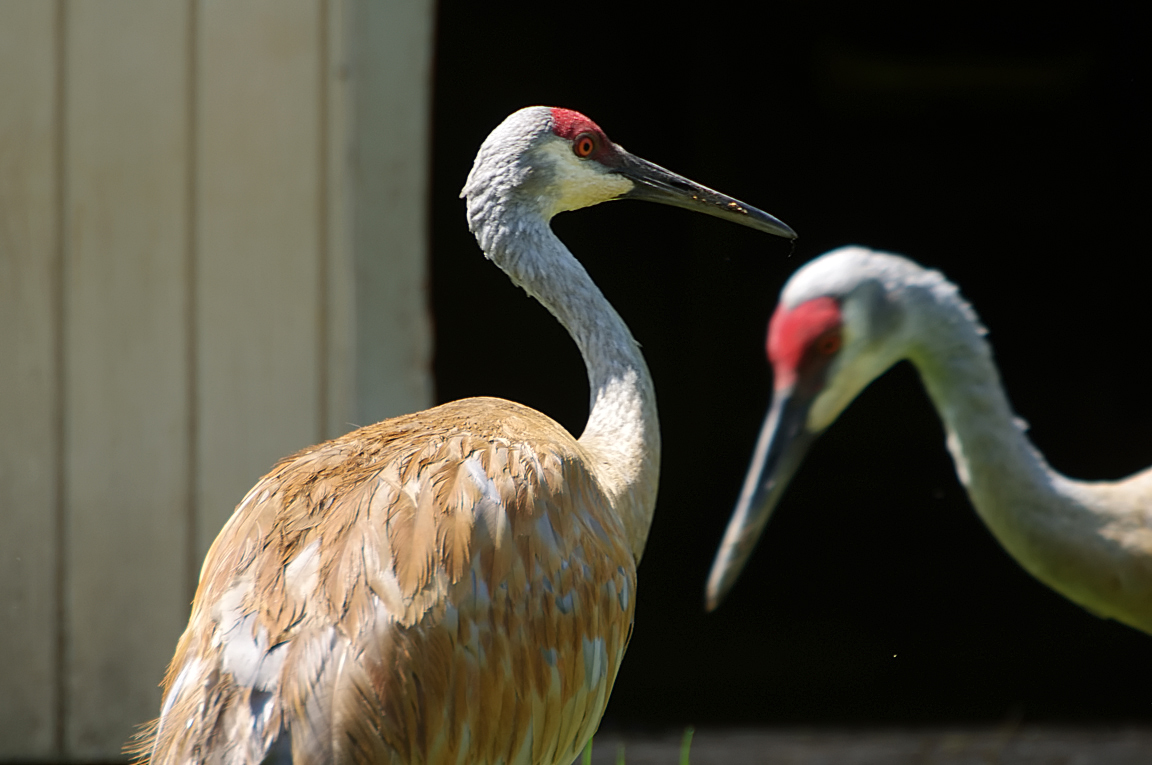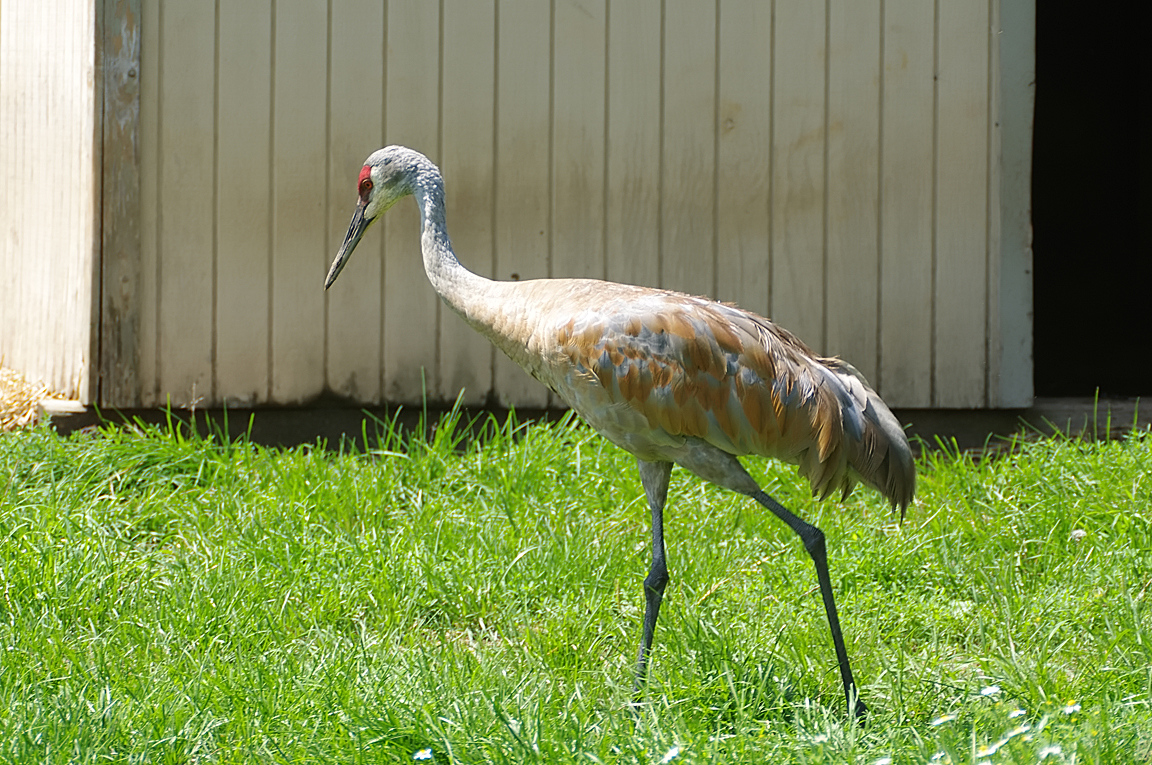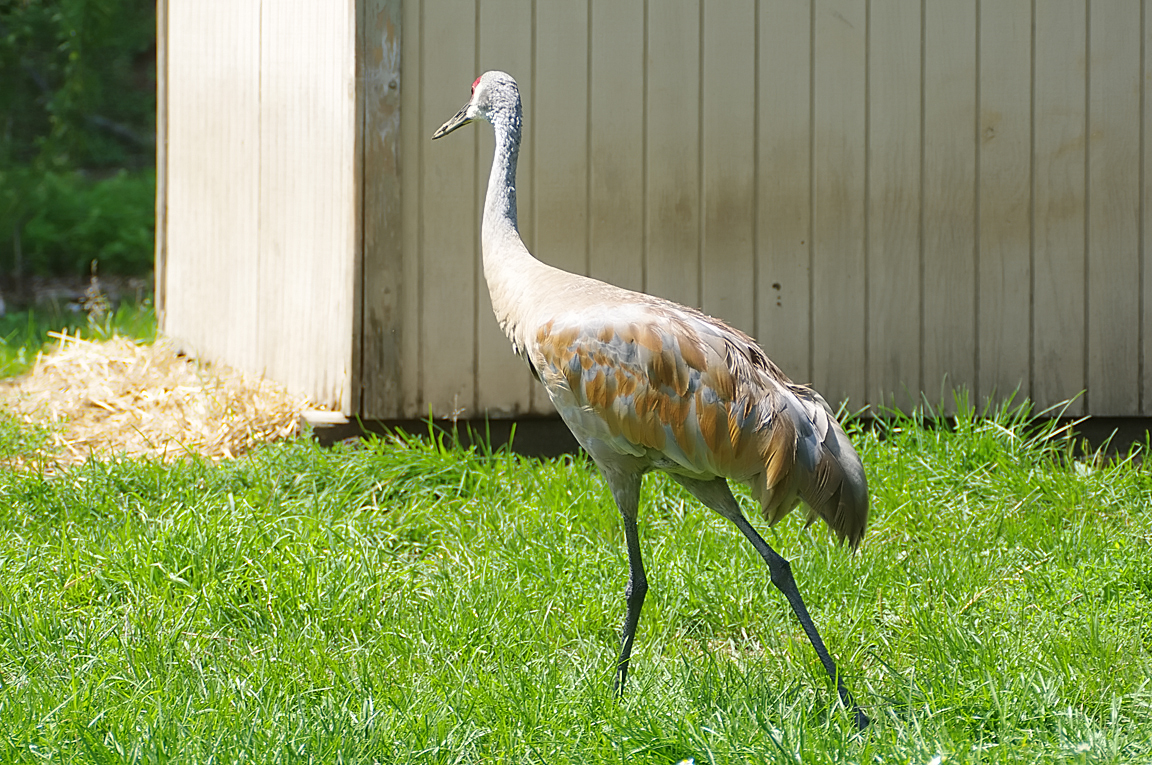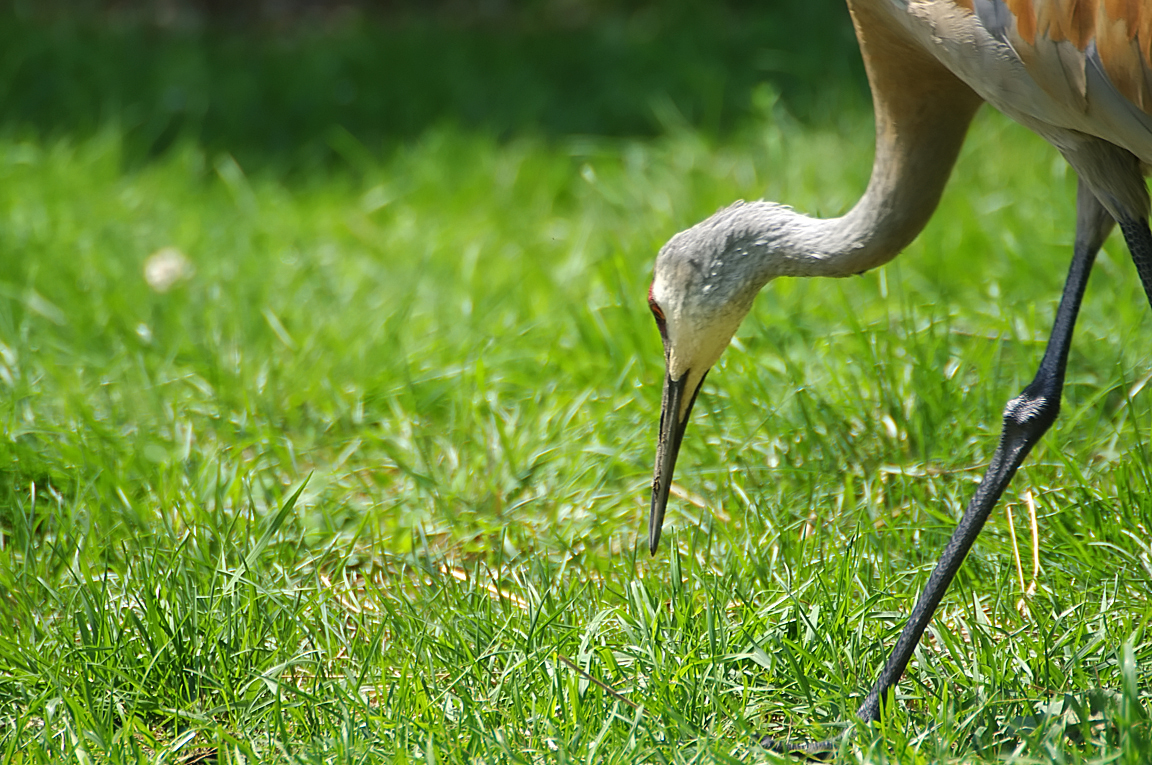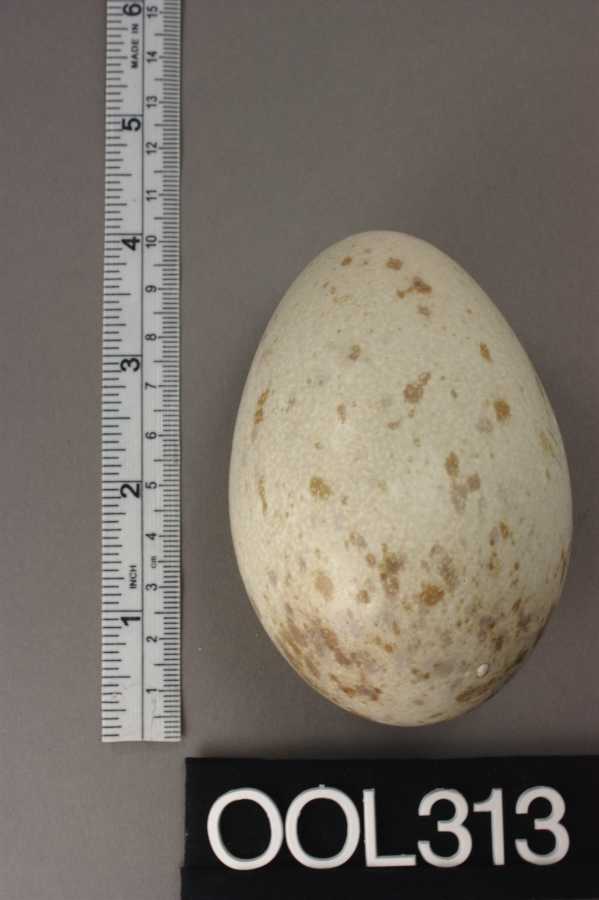|
|
|
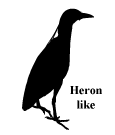 |
Sandhill Crane
Captive |
| Grus canadensis | |
The Sandhill Crane is a tall gray bird of open grasslands, meadows, and wetlands. It congregates in huge numbers in migration.
Interesting Information
-
The Sandhill Crane does not breed until it is two to seven years old. It can live up to the age of 20. Mated pairs stay together year round, and migrate south as a group with their offspring.
-
A crane fossil approximately ten million years old was found in Nebraska and is structurally identical to the modern Sandhill Crane, making it the oldest known bird species still surviving.
-
A group of cranes has many collective nouns, including a "construction", "dance", "sedge", "siege", and "swoop" of cranes.
-
Sandhill Cranes are noted for their elaborate courtship displays. Two displays are used to form mating pairs while three other displays occur only between mates and serve to maintain the pair bond.
-
They frequently preen with vegetation and mud stained with iron oxide resulting in a reddish brown color rather than their natural gray.
Description
Adult Description
-
Very large bird.
-
Long neck.
-
Long Legs.
-
Gray body, may be stained reddish.
-
Red forehead.
-
White cheek.
-
Tufted feathers over rump.
-
Length
-
47.2 in; 120 cm
-
-
Wingspan
-
78.7 in; 200 cm
-
-
Weight
-
119.9 - 172.8 oz; 3400 - 4900 g
-
Sex Differences
Adult Sexes Similar
Immature
Similar to adult, but mottled gray and brown, and without facial markings or bald forehead.
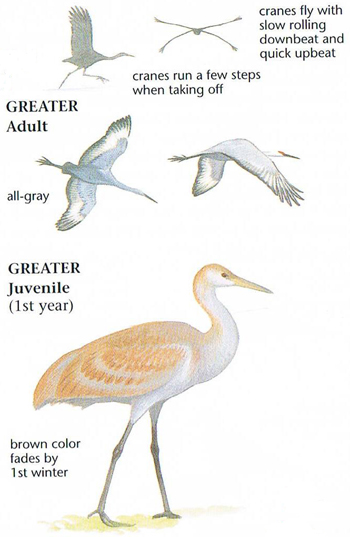
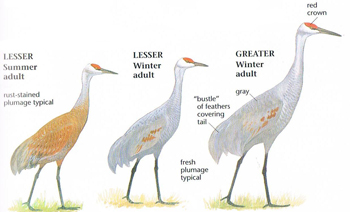
Photo taken from: The Sibley Field Guide by David Allen Sibley
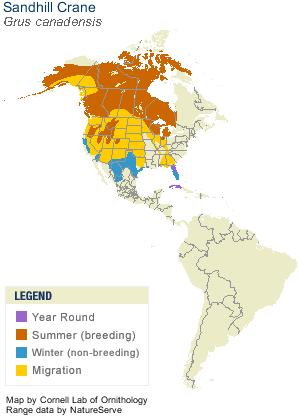
© 2003 Cornell Lab of Ornithology
|
Habitat |
|
Breeds in open marshes or bogs, and in wet grasslands and meadows. Feed in marshes and grain fields. |
|
Behavior |
|
Sandhill Cranes forage for grains and invertebrates in prairies, grasslands, and marshes. They do not hunt in open water or hunch their necks the way herons do. Sandhill Cranes form extremely large flocks - into the tens of thousands - on their wintering grounds and during migration. They often migrate very high in the sky. |
|
Food |
|
Mostly grains and seeds, some insects, other invertebrates, and small vertebrates. |
Taxonomy
| Kingdom: | Animalia |
| Phylum: | Chordata |
| Subphylum: | Vertebrata |
| Class: | Aves |
| Order: | Gruiformes |
| Family: | Gruidae |
| Subfamily: | Gruinae |
| Genus: | Grus |
| Species: | Grus canadensis |
| Subspecies: | Grus canadensis canadensis |
| Grus canadensis nesiotes | |
| Grus canadensis pratensis | |
| Grus canadensis pulla | |
| Grus canadensis rowani | |
| Grus canadensis tabida |
Similar Species |
|
Great Blue Heron, often called a "crane," is smaller, lacks the fluffy rear end and the red forehead, and flies with its neck curled against the body instead of straight out. |
|
Bird Sound |
|
A deep, rolling trumpet and rattling. |
|
Eggs look like this |
|
Photo taken from: ARCTOS Collaborative Collection Management Solution |
